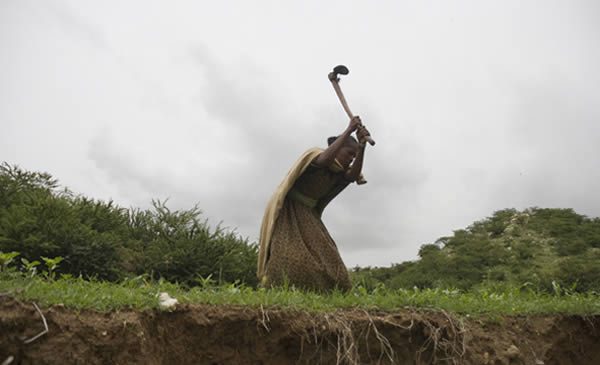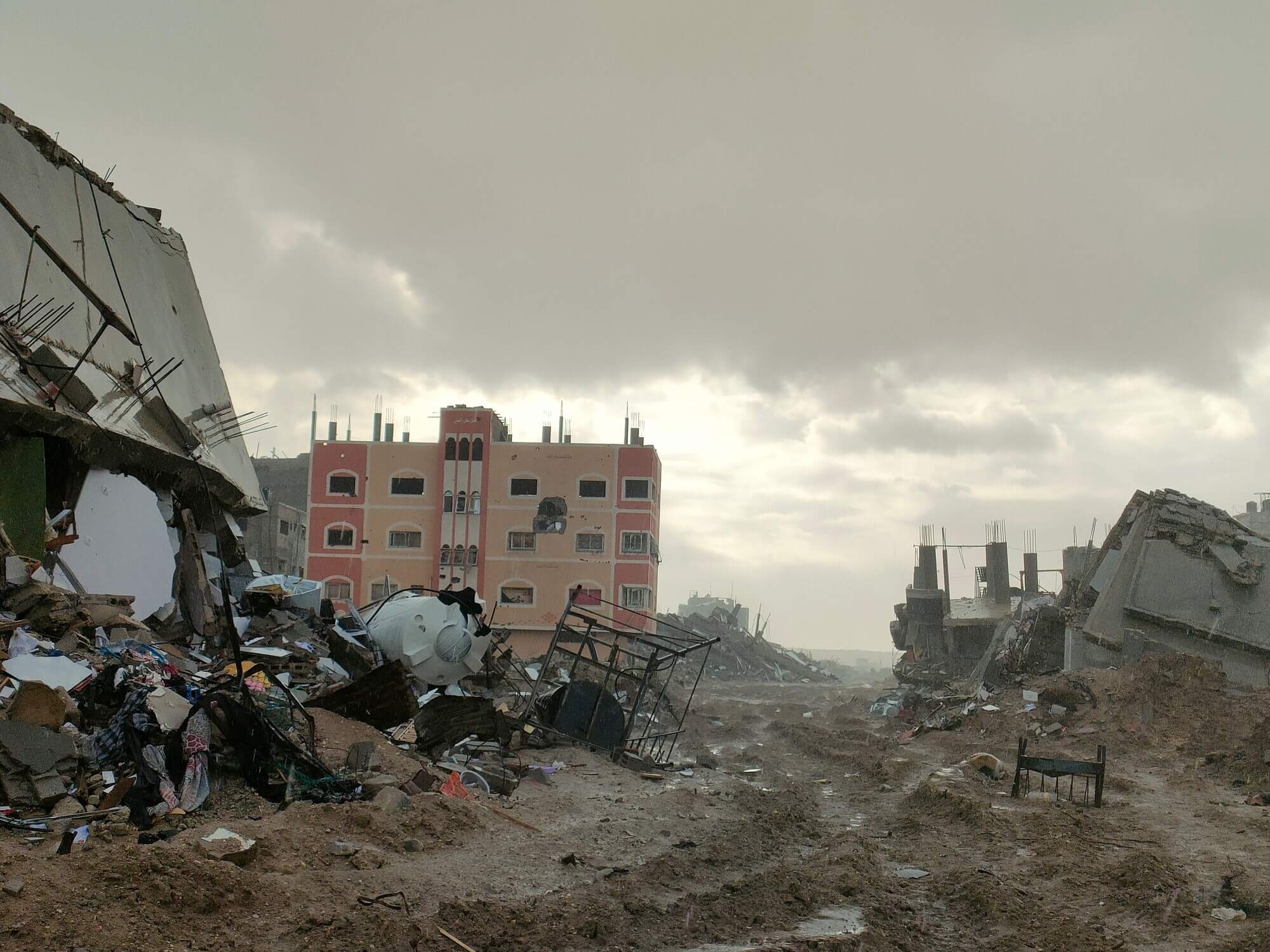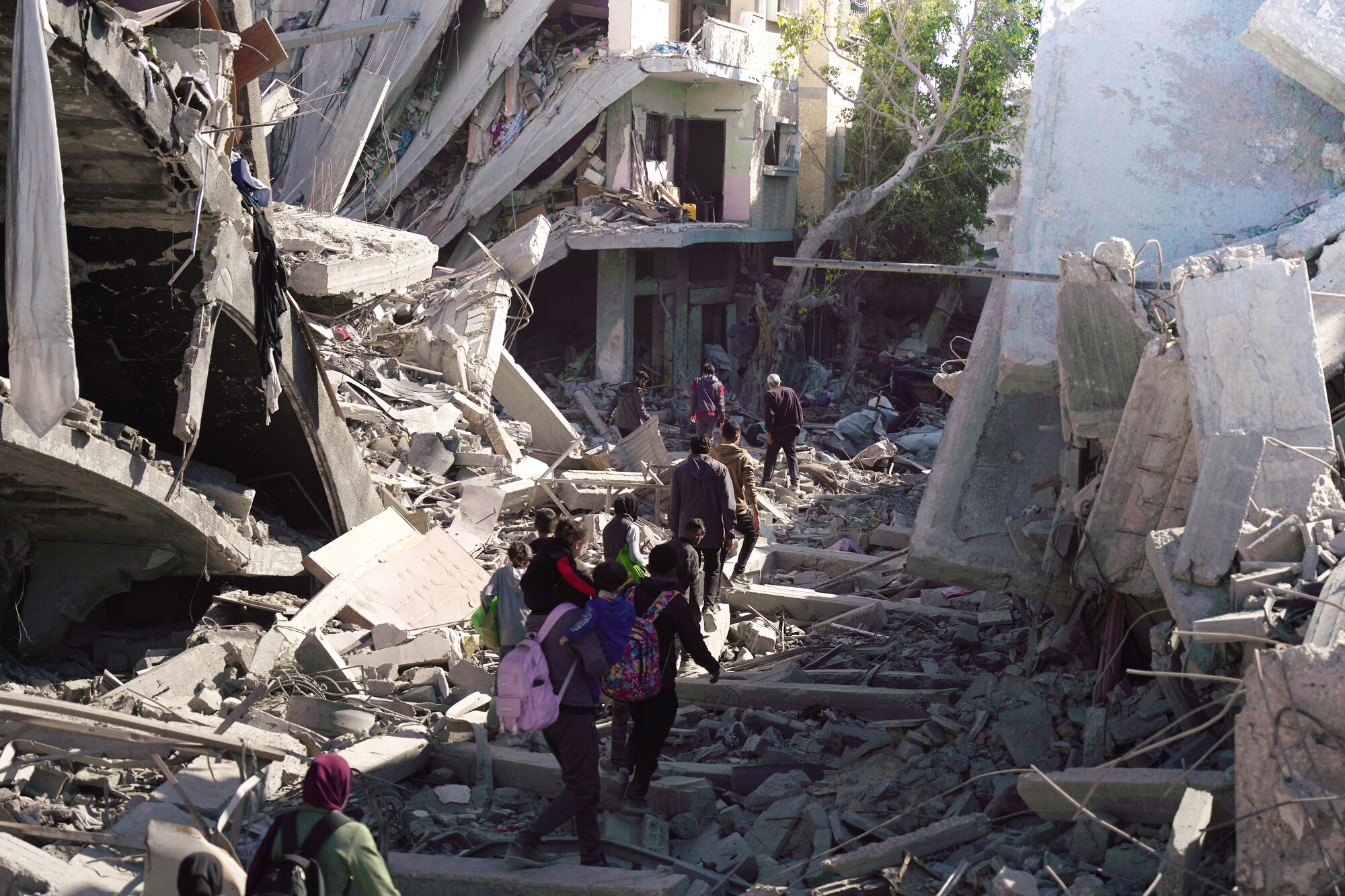By Coco McCabe, Oxfam America
The rainy season has come to Adi Ha in northern Ethiopia. Plastic sacks, doubling as raincoats and folded like origami crowns, sit at the ready on the heads of young herders.
Puddles swallow trucks to their underbellies. And everywhere, green sweeps the hillsides: delicate shoots of teff, so vibrant it looks lit from within, mix with fields of corn, the stalks thickening by the day and inching skywards.
But here in this village of about 1,100 households in the region of Tigray, they’re holding their breath. Will the rain stay steady? Will it fall in enough abundance to fatten the grains and produce a bountiful harvest on which so many here depend?
At night, in my hotel room in Abi Adi, I listen as the rain pelts the metal roofs and pours into the courtyards and muddy streets below. I think about all the uncertainties farmers in Adi Ha face, and then I think about the south and what happens when those uncertainties become life-threatening. There, where southern Ethiopia, northern Kenya, and south-central Somalia meet, a severe drought and food crisis has snared almost 12 million people, farmers and herders both. The UN has already declared famine in six parts of Somalia. And some areas of the region are the driest they have been in six decades.
Though the rain in Tigray brings hope, nothing is certain. Not when the weather has become increasingly erratic. And not when the vast majority of farmers rely on rain to feed their fields. Countless families here—like those now struggling in the south—have known the ravages of drought.
But in Adi Ha, and a growing number of communities in Tigray, farmers now have a means of managing some of that unpredictability: weather insurance for their crops.
Initiated in 2007 by Oxfam America and a host of partners, including the Relief Society of Tigray and Swiss Re, a new program has found a way for even the poorest farmers to afford insurance. Instead of cash, these farmers can pay for their premiums with labor, a resource they have in abundance. If insufficient rain falls during a critical period of the growing cycle, and their teff, wheat, or barley suffers, farmers will receive a payout—an infusion of cash that can help them cover their losses and weather the rough times.
“This insurance is very good,” said Selas Samson Biru, who paid 200 birr ($11.75) this year to cover half a hectare of teff—a tiny grain that is a staple of the Ethiopian diet. “The insurance is good because it’s saving our assets in a bad year.”
As she spoke, a heavy sky pressed down on the fields of Adi Ha. Nearby, farmers coaxed their oxen through rocky fields, hurrying to plow and plant. It felt like rain. But Biru was worried still. She expected her corn would be OK, but the teff?
“We have some doubt,” she said.
Readings at a small rain gauge across the river from one of Biru’s fields showed that, on the Ethiopian calendar for July, rain had fallen on only seven days until a thorough dousing on July 24, when 50 millimeters soaked the fields. Before then, the heaviest rain measured just 30 millimeters.
With the green that rain has brought to Adi Ha, it’s hard to fathom just how dry the south is. And in fact Biru, far from any access to the Internet or TV, said she had not heard about the drought and suffering there.
“We are sorry about that news,” she said, worry creasing her brow. “We feel that type of drought might come to us.” And then she brightened.
“Have they bought insurance?” Biru asked. “This is one of the most important things that needs to be scaled up.”
That’s in the works. Through a new partnership, Oxfam America and the World Food Programme, together with Swiss Re, are helping to bring this insurance model—and a package of other resource-management techniques including savings, credit, and disaster risk reduction strategies—deeper into Ethiopia and across three new countries.
It won’t come in time to help families in the south, but the disaster there may finally spur some serious international interest in finding long-term solutions—like weather insurance—to the devastation drought brings.
Blog originally published by Oxfam America
Read more about Oxfam’s response to crisis
Make a donation to the Africa Food Crisis Appeal



